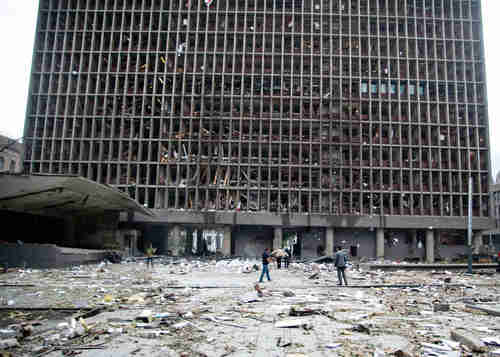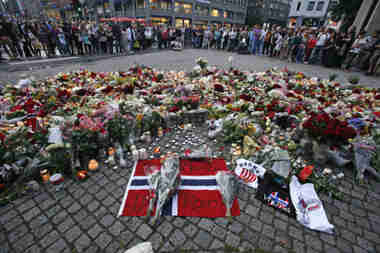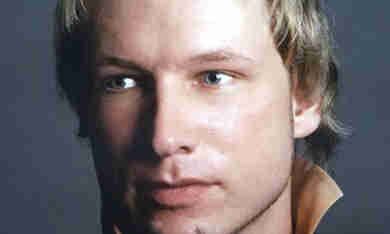Norway in shock over ‘blond on blond’ terrorist violence
Norwegians thought they were immune to this kind of violence. Norway is the land of peace and tranquility. They are the peace brokers, involved in conflict resolution, proud of their country and of doing good around the world, according to the Telegraph. Oslo is the home of the Nobel Peace Prize committee that lectures the rest of the world on right and wrong.
 Oslo government building
Oslo government building
32-year-old Anders Behring Breivik of Oslo, a self-described right-wing fundamentalist Christian anti-immigration activist, has been apprehended for the horrendous acts. First, A huge bomb blast targeting Oslo’s main government building caused damage for blocks away. Then Breivik traveled to Utoya island, where there was a summer camp. He spent 90 minutes shooting young teenagers, killing 82 of them.
The terrorists acts are thought to be targeted at the Labor Party. The Prime Minister is from the Labor Party, though he wasn’t in his office at the time of the blast. And the summer camp was sponsored by the Labor Party for kids who aspired to be politicians.
|
|
 |
|
|
“Everyone thought that he was a Muslim, a Pakistani, or someone with dark skin,” says an Oslo teen quoted by CS Monitor, “but he was Norwegian and he did this to his own people.” A woman said, “It’s just unbelievable that such a thing can happen here in Norway.”
Right-wing violence was supposed to be under control. There has been right-wing violence in the past, but it was generally limited to property damage and knife violence. The entire country has had about 40 murders per year. No one ever dreamed of an al-Qaeda style mass killing.
The horrendous terrorist acts are raising questions about the police, according to AP. Why did it take 90 minutes for police to stop the massacre on Utoya? Norwegian police aren’t armed normally, so when the local police arrived, they immediately concluded that they couldn’t do anything, since they were unarmed. They called in a SWAT team, who had to drive to the scene, and then find a boat, because their helicopter wasn’t on standby. That’s what took 90 minutes to arrive.
Who’s to blame for right-wing violence?
Some people are blaming the terrorist attacks on the rise of right-wing populist parties in several countries. Breivik himself was an active member of the anti-immigration Progress Party, the second largest group in Norway’s politics, according to the Telegraph.
The “far right” anti-immigrant Swedish Democrats sprang from nowhere to a sizable number of votes last year. (See “21-Sep-10 News — Sweden shocked at anti-immigrant victories.”) And just recently, Denmark implemented permanent border checks on its borders with Germany and Sweden. ( “6-Jul-11 News — Denmark’s border controls called a ‘European crisis'”)
|
|
 |
|
|
Of course, the leaders of these movements have nothing to do with the kind of violence perpetrated by Breivik, but in today’s political climate of universal ideological hatred, politicians on the left will not hesitate to score political points by making such accusations.
Even without such direct accusations, there are more nuanced indirect accusations: That these rising right-wing parties are creating a social atmosphere and environment that encourages right-wing extremists like Breivik.
From the point of view of Generational Dynamics, there is a correlation between the rise of right-wing parties and the rise of right-wing violence, but it’s not a causal relationships.
The common cause is that during the last decade, the survivors of WW II have all but disappeared, pushing the world deeper into a generational Crisis era. And what characterizes all generational Crisis eras is an increase in nationalism and xenophobia. These factors encourage the rise of right-wing violence, just as increasing financial crises encourage the rise of left-wing violence. Ideologues on the left and right may eschew violence, but they encourage mutual hatred.
We’ll now have to watch to see the effect of this massacre in Norway. Left-wing violence is increasing anyway, as labor unions and socialists react to the forced austerity plans. It’s possible that the Norway massacre will be a one-time event, or it may encourage more right-wing violence, especially targeting the waves of Muslim immigrants from Turkey and north Africa. The terrorist attack in Norway may cause horrendous outcomes that go beyond even the death and destruction that occurred on Friday.
COMMENTS
Please let us know if you're having issues with commenting.